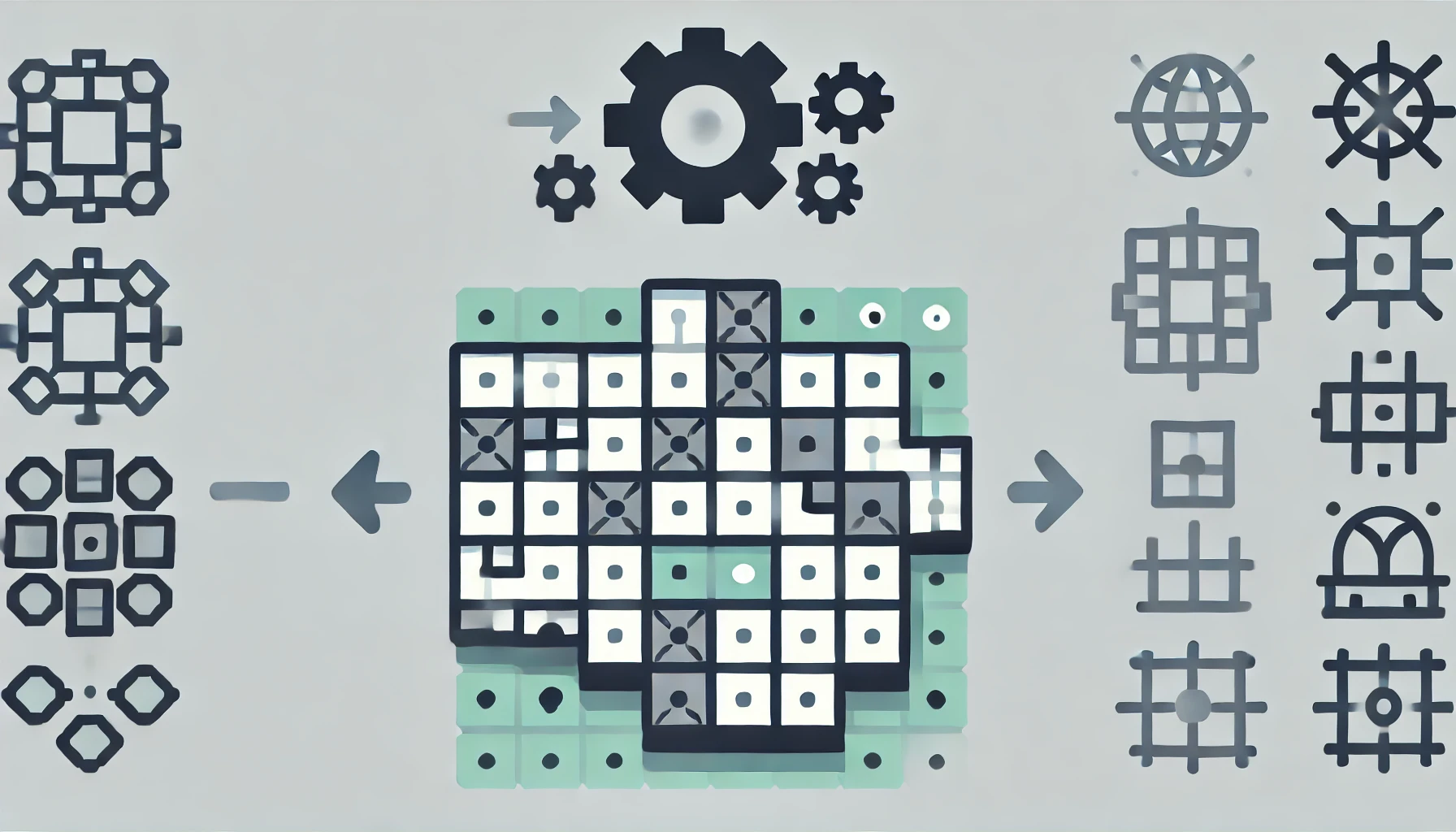
January 16, 2025
Creating a Procedural Map Generator for Roguelike Games
How can roguelike games have limitless replayability? Procedural map creation makes each dungeon unique, surprising, and challenging. This post shows how to use algorithms to create fascinating and playable procedural maps for roguelike adventures.
Understanding Procedural Generation in Roguelikes
Game developers procedurally create random content via algorithms. Unique maps and layouts from procedural generation improve roguelike games. Randomness makes each game play unique and interesting. The goal is to develop playable maps using randomization and systematic design. Developers can use algorithms to create linked paths, coherent settings, and key areas of interest, resulting in a unified gaming experience with surprises.
Setting Up the Grid
A procedural map generator uses a grid to arrange rooms, walls, and passageways. Map units such as grid cells represent walls, floors, and doors. Let's see a simple Python grid initialization code:
grid_width, grid_height = 20, 20
grid = [[' ' for _ in range(grid_width)] for _ in range(grid_height)]
Each grid cell in this case is empty until we add rooms, walls, or other things. Starting with a blank slate allows you construct any arrangement for random room creation.
Designing Dungeon Layouts
Cellular automata and binary space partitioning (BSP) are prominent roguelike dungeon layout methods. Each style and use case is distinct.
- Binary Space Partitioning (BSP): BSP divides the map into rectangular parts and recursively partitions them into rooms. This strategy works great for classic dungeon layouts with well defined rooms. Try this short Python example of a BSP-style room generator:
def bsp_split(grid, x, y, width, height):
# Randomly split horizontally or vertically
if width > height:
split = random.randint(1, width - 1)
# Create rooms and walls accordingly
else:
split = random.randint(1, height - 1)
# Recursively split rooms
- Cellular Automata: Iteratively changing cells based on cells around them makes cave structures look more real. Natural-looking settings are perfect for big caves when made with this method. Corridors between rooms established either way ensure connectivity and movement.
Ensuring Playability
Playable maps must be fully traversable. Pathfinding algorithms like A* can verify critical area connections. Testing for isolated rooms and unavailable exits prevents player stuckness. These tests keep things interesting without causing problems.
Conclusion
Roguelikes have unlimited gameplay options with generated maps. Explore BSP and cellular automata to create different maps every time. Procedural generation lets you create unique generators for roguelike experiences in conventional dungeons or natural caves.
1.1k views
